They’re like that in this apartment we’re renting and I keep seeing them elsewhere. I don’t get it.
Kind of off topic, but I’ve just gotta add that the safety shutters over the positive and negative terminals that only open when the ground pin (which is longer than the others on the plug) is inserted up top is brilliant, it basically makes short circuiting impossible. Electrical outlet design is one of the few things I’ll concede the UK does better than the rest of the world.
I too am relatively envious of the UK’s outlet design, I only hate how bulky and foot destroying they are.
Maybe, but with the switches on the sockets, I hardly ever unplug anything at all unless I’m moving it. Why would I?
So pretty much every time something’s unplugged, it’s in my hand or away in a cupboard, never lying on the floor.
Tom Scott has a video all about the UK power outlet plug and socket and it’s an engineering marvel. The switch is just one feature.
The switch isn’t really a a feature of the UK plug, rather just something they seem to have started doing with their sockets.
Well, the design of the plug also implies the design of the socket. I was born in the eighties, and I’ve never seen an electrical socket without a switch, except for the appliance socket used for the cooker, which is behind where you install the appliance - the switch is higher up, above the countertop where it is accessible.
Basic extension trailing sockets don’t, most of the time unless you buy a snazzy one. But it’s by no means a recent development.
Plug and socket obviously go together but I just mean that you could have the switches for any plug, it’s not tied to the plug but just rather what socket plate (or what’s the term) design is adopted. Schuko could have those switches, I think Yanks have them in newer plug plates and so on. It’s just that the UK has adopted (in a standard or just commonly for some other reason) the switches.
I’d like to think Australia has a nice middle ground design to their sockets/plugs without the foot destroying bulk. Still get the shutter variants for bathrooms too.
I like the Australian 90 degree plugs, too. Much slimmer than the UK ones.
Yeah, I can only tut and shake my head when non-Brits complain about stepping on Lego.
the safety shutters over the positive and negative terminals that only open when the ground pin (which is longer than the others on the plug) is inserted up top is brilliant
The US is catching up in that regard, at least, with tamper-resistant (TR) outlets being mandated by the NEC since 2008.
It’s balanced by light switches being outside of the bathroom, which I absolutely hate.
You can have a pull cord in the bathroom or a switch outside, as I understand it
You can’t have standard switch inside?
I’m currently renting an Airbnb where the bathroom fan switch is in the living room, two rooms over
Good for announcing guests that you’re going to take a shit and they’d better shuffle off
UK household electricity is pretty spicy compared to many other places - it has more safety features as a result. (3 pinned fused plug, socket switches etc)
The rest of Europe has 220V as well and they don’t have switches on their outlets.
Isn’t it just 230v 50 Hz like most of the world?
Apparently around 65-70 % of the world population (with access to electricity) has 230v 50 Hz.
How is it more “spicy” than anywhere else in Europe?
I was mainly referring to almost all of the American continent(s), lots of Africa, China and a few other places too. I didn’t think I’d mentioned Europe.
The many other places is the US
And Japan, and Canada, and Mexico, and the majority of South America, and a handful of countries in Africa and the Middle East.
A lot of dodgey wiring.
Do they have the wiring on the outside of the houses so it’s easier to repair?
I’ve heard in UK they tend to do such things.No, it’s usually buried in the wall behind the plasterboard. Although it is possible to use surface trunking. It’s quicker and therefore cheaper to use trunking with less making good afterwards

It was a joke on UK putting water pipes on the outside of their houses.
Making them sometimes freeze and burst in the winter, but it’s easier to repair. 😋Well duh, they freeze and burst in winter so they obviously need to be outside for easier repair! Think of the mess they would make if they were inside the walls.
Absolutely, it’s not the UK that are crazy, it’s everybody else.
Hmm the only water pipes I’ve ever seen outside are for the garden hose 🤔
In our defence, most of that is legacy from the post war rebuild (copper shortages etc). The modern regs are comparable or better than a lot of places.
There’s enough of the dodgy stuff around that it needs to be accounted for, but it’s being phased out as new stuff it built or renovated.
I have been with 110v plenty of times used to wire houses in my youth. Been hit once with 220v knocked me on my ass for 3 days. I stopped being so cavalier after that I wish they had those outlets vs the midevil outlets the US has.
That’s to make up for how incredibly dangerous they are. /joke
at least in part it’s an end result of decades of crud and tech debt, so to speak, accumulating in british power grid and home wiring. they do it this way because otherwise it won’t be safe. continental euro home wiring usually has thicker wires, residual-current circuit breakers and no ring circuits so we get away without fuzes and switches, and with smaller plugs that don’t become caltrops. sometimes we do have ring circuits kind of thing, but not in house wiring, instead it’s in medium voltage distribution grid, and it’s sized so that it can serve most of loads after single failure.
explanation
in normal state, medium voltage line (like 15kV, 20kV) might branch out in rural terrain from substation to two or more places. in case of single failure, mildly common after storms, everything downstream would be down. instead, to increase reliability, every few km there’s a radio-controlled switch and some of the far ends have line between them that is usually disconnected. in case of single failure, damaged segment is cut off, and the far end of the loop switch gets closed. this way power is delivered the long way around the loop, allowing for repairs of the damaged sector in the meantime. this also specifically avoids some of problems of ring circuits especially in situation when some lines might be damaged.
also small child/baby protection.
How does the switch protect children?
if it is a small child it is assumed that the joint probability of both turning on the switch and inserting a fork through the holes is roughly the product of probabilities of each (therefore lower than each individually), i.e both events are independent.
Have you tried to stick anything metal into one of these plugs? It is fairly todler proof. I think a 7 year old has the dexterity to defeat it but certainly not a baby.
Manufacturers sell the wall sockets in both switched and unswitched versions so I would say the switch is just there for convenience of the user.
It seems that maybe in the 60s having a switch on the wall was very useful because most electrical devices would have been designed to be switched on or off from its mains power connection (like lamps, hairdryers, vacuum cleaners, electric whisk, etc). I assume the standard was to have a switch as this gave a little extra functionality. Today however many electrical devices have digital electronics that don’t expect to be power cycled and so a switch is not really a feature but an inconvenience (think smart bulb, or Apple TV).
Have you tried to stick anything metal into one of these plugs?
No, hold on a second, let me try and come back.
Joking aside, I agree something like what you explained was probably the original reason. But I have seen some parents praising the switch mechanism for this reason as well but perhaps because they are more used to old European type plugs which does not have the internal security feature of UK plugs
Agreed, most people I have asked also think the switch is an additional safety feature. I can see that it is helpful to isolate a device and so can make using all manner of devices safer, but it requires that you know what the switch does and when and why you would switch it so this kind of excludes babies and toddlers.
My wife is from North America and common knowledge there is that wall sockets are just incredibly dangerous at all times. The UK style plug is quite different.
But who will protect the big babies?
Children love playing with the switch, so I’m not sure how that’s supposed to protect them.
Everything you’d want to know about British wiring and my introduction to Tom Scott:
when any electricity leaks out (for example through your body) it switches off. the eu also has the same system, but its one switch for your entire house. the us also has this but only in bathrooms.
GFCI circuits are required by code around sinks and the like. Bathrooms, kitchens, utility wet rooms, etc.
You can relatively easily install them anywhere you want though.
These aren’t automatic switches, but other people explained the reasoning.
oh, according to electroboom they were gfci.
They’re connected to an RCD, as modern UK wiring has all sockets connected via an overall RCD in the fusebox, but the switches on the socket are just basic on/off switches.
Allows you to remove power from the plugged in device without unplugging it. This provides convenience to easily and quickly turn things on and off and prevents arcing when unplugging. 240V 13A can arc a bit, particularly if unplugged under load, or on older sockets where the contacts have worn. While a little arcing doesn’t do much damage immediately, over time it will cause pitting and make a high resistance joint that will generate heat.
The switch only disconnects the live terminal, but the neutral terminal should be similar potential to earth (depending on how the building is wired).
Truly the king of plugs and sockets. The plugs are individually fused according to the device needs, ergonomic to use and exciting to stand on.
Allows you to remove power from the plugged in device without unplugging it. This provides convenience to easily and quickly turn things on and off and prevents arcing when unplugging.
That’s exactly what I do, because it’s more convenient than unplugging everything.
I live in South Africa, where we had rolling blackouts (called loadshedding) for a few years. It’s easier to switch everything back on when the power comes back than to plug it back into a socket without a switch, especially with my fucked up spine.
The electricity in the place I live was done poorly, so having something plugged in “live” risks a surge or something and then the appliance gets fucked and then everything smells like burnt plastic.
And that’s the best case scenario. Others have had housefires.
Also, the South African plugs aren’t pleasant accidentally to step on. It won’t pierce your foot, but it can still hurt like a motherfucker for a few seconds if you step on it in the wrong way.
Those UK plugs do look a lot more nasty to step on. I shudder at the thought.
I like the EU and US two prong cables ( 🔌?) where the prongs are parallel to the cable, but not the cables with the orthogonal prongs.
I like the EU and US two prong cables ( 🔌?) where the prongs are parallel to the cable, but not the cables with the orthogonal prongs.
Non-grounded plugs aren’t that great, though, and once you add the third prong the plug gets much less flat. Compare:
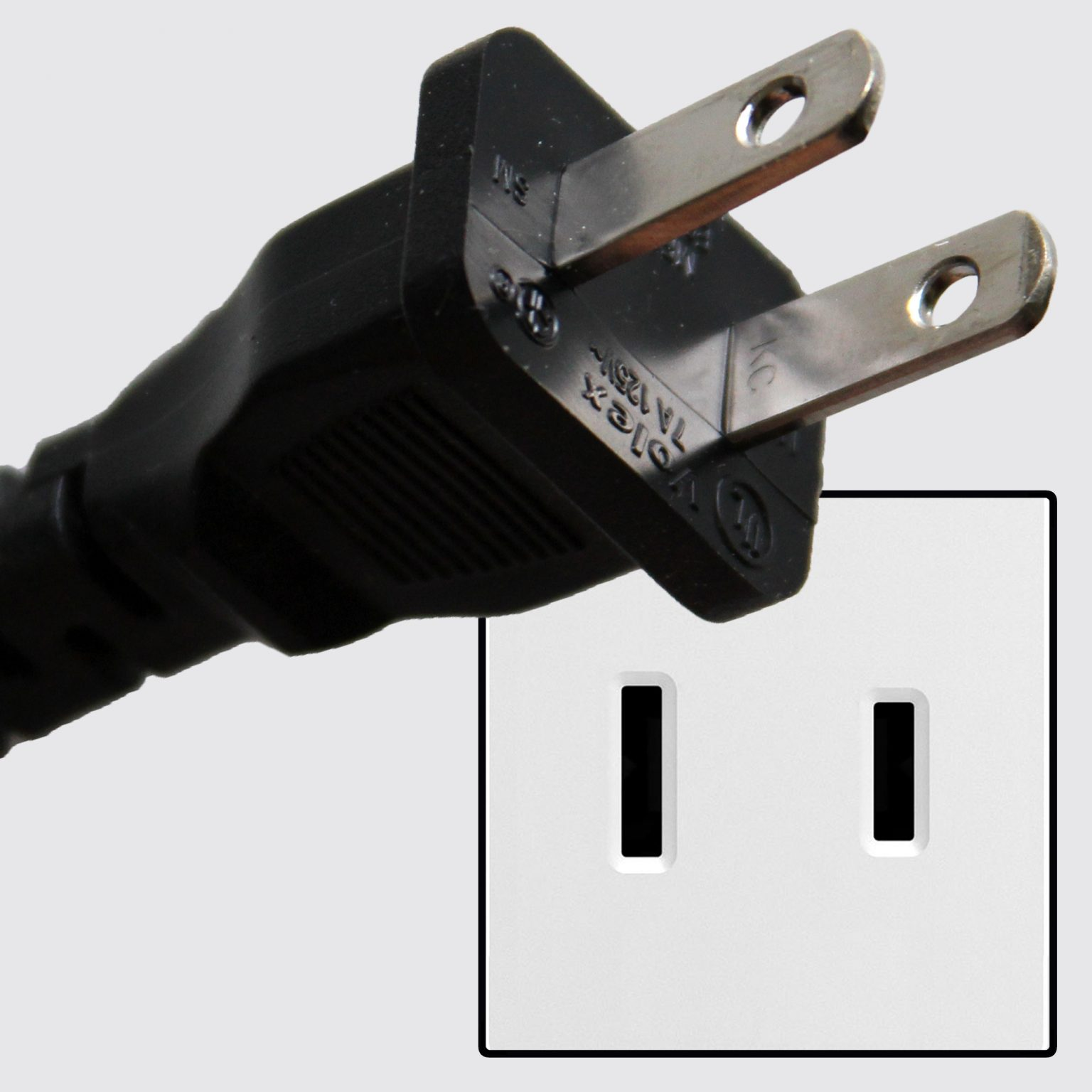
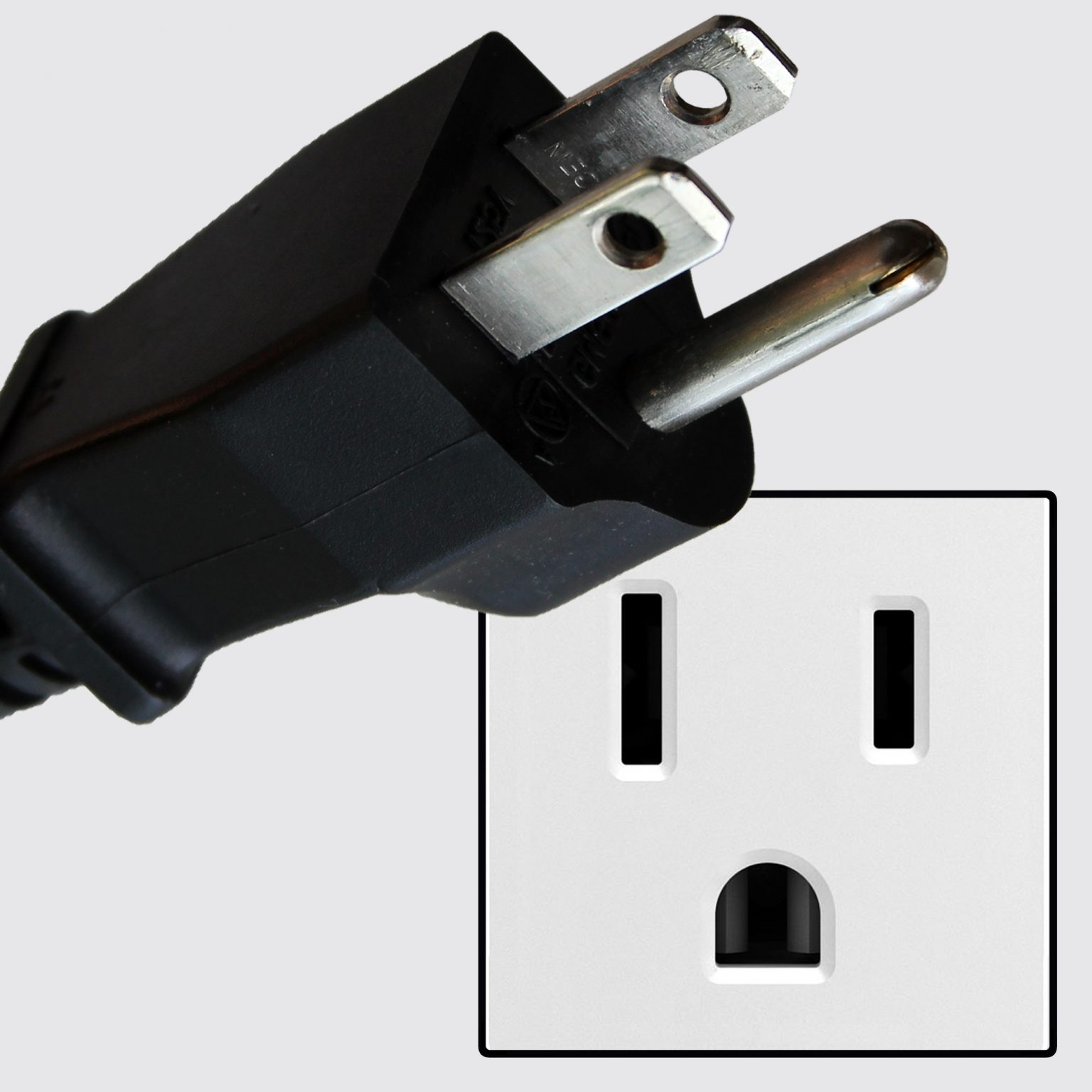
Maybe Italy and Chile have the best idea in terms of slim grounded plugs, although the lack of polarity might be a problem?
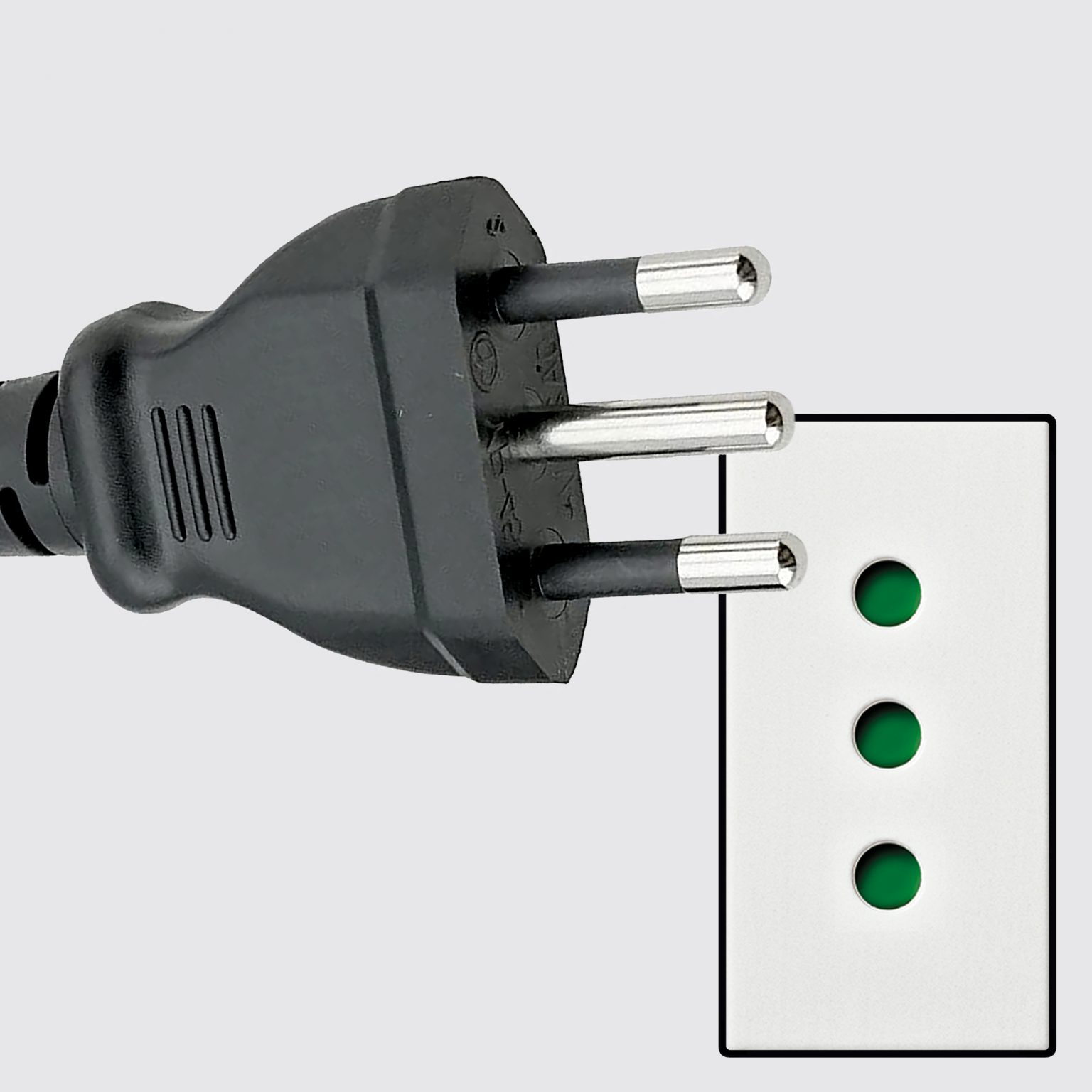
Also, IMO right-angle plugs are often better than straight ones because you can put furniture closer up against them and do so without stressing the cable.
why would the lack of polarity be a problem? the outlets only deliver AC, and everything plugged into them are made for AC.
I gotta admit I don’t entirely understand it either, but people claim it matters. ¯\_ (ツ)_/¯
https://www.physicsforums.com/threads/why-is-the-correct-polarity-important-with-ac.979324/
right-angle plugs are often better than straight ones because you can put furniture closer up against them and do so without stressing the cable.
Yeah that is definitely a huge bonus. I’ve taken it for granted.
We’re slowly adopting three pronged Italian/Chilean-type plugs that will be “backwards-compatible” with the EU plugs. I have no clue about polarity or anything like that.
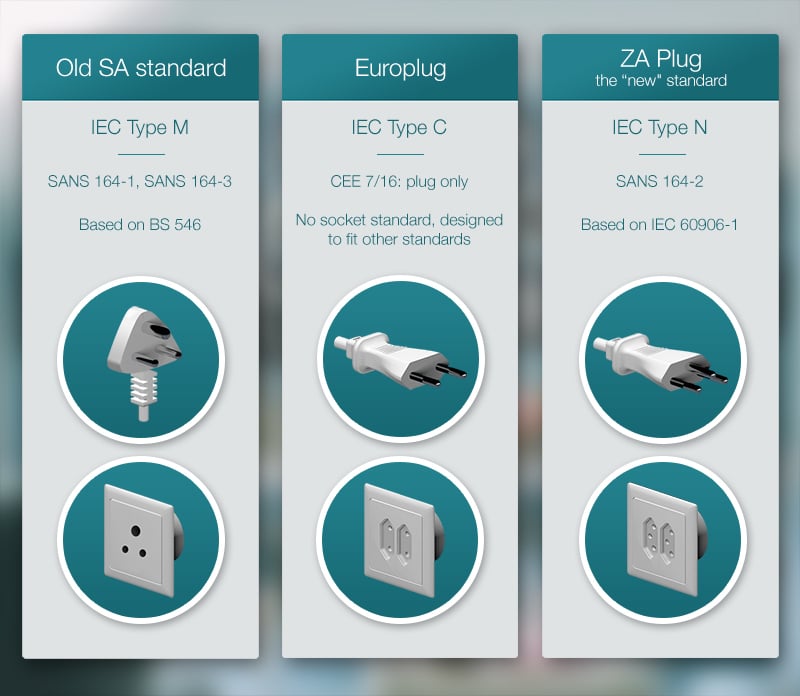
New sockets include em. The original three pronged socket is kind of a hazard. Kids can stick their fingers in there. Not sure how that got approved.
Wait until you step on with bare feet an upturned UK plug. Worse than stepping on Lego
How many devices do you have that don’t have a switch on the device itself?
exciting to stand on
Thanks, I hate it.
Makes sense, American lie voltage (outlets) are 120V. 240V is considered high voltage and isn’t typically fed into residential units. Plugging anything rated for 120V into a 240V outlet is gonna be a bad time, and is why the outlets for high voltage are shaped differently.
I was gonna guess that the switches were too negate so-called vampire power, which is when a truck’s of electricity flows into appliances that are normally off. IMO that trickle is so negligible in a residence that is 6 effectively irrelevant, but that’s just here in the US. I don’t know anything about foreign electrical systems.
240 is used all the time for furnaces, driers, and increasingly EV outlet connections.
It’s just all our “normal” stuff is 120.
I wish our electric kettle outlets were 240. I’m unreasonably jealous that other places in the world can boil water faster!
I think you can have it, but you’d need to spend a pretty penny.
All it would take is calling an electrician to run the appropriate wiring from the place you want the kettle plugged in to you breaker box, connect it to the breaker box with the appropriate breaker, cap off the other end with the appropriate plug (a 240V plug does exist in America), and then buy a kettle capable of receiving the rated voltage and current and splice on the appropriate plug (because I presume you won’t find one sold with that plug).
An extremely expensive way to save maybe three minutes boiling water, but you can do it.
Safety, easier to switch things off without unplugging them. Why not have one if it’s more convenient? Not all of them have switches though.
It made a lot more sense when things didn’t have their own power switches but…what does that apply to anymore? How many devices do you own that are powered off exclusively by unplugging it? Why pay for the manufacturing time and material to add a switch if nothing uses it anymore?
There are still times where it’s convenient. I have some display cases with integrated lighting and the inline switches are incoveniently between the case and the wall so its super handy to turn it on and off at the plug.
Being able to turn things off at the plug also reduces standby/phantom power when things are in sleep, which for some devices adds up more energy usage than you’d think.
Sometimes when people go on holiday for two weeks they like to disconnect the electrical items in their house for safety. With switched sockets you can just turn them off instead.
I’m sure I could live just fine without switched sockets, but it’s convenient they are there.
Ah, now all of that makes sense! Thank you!
Fridge, washing machine, dishwasher, television, phone charger, robovac dock, lamps, computer monitor, aquarium pump… I could go on.
It’s not strictly necessary, but it’s a convenience.
Most of those have power buttons and, aside from the charger and vacuum, those things are supposed to stay on.
I meant more things like lamps that you actually turn on and off…And the majority lamps have switches nowadays, I’m not sure why you included it on your list
We’re getting into the weeds a little bit here, but there’s a lot of things that have power buttons that will put the thing into standby, not off. I’ve often done a ‘hard reset’ on my ‘smart’ tv when it starts acting up, just gotta cut the power.
It’s a small convenience, but it’s nice. I’ll happily pay the extra three cents in manufacturing costs for something that lasts decades and may be occasionally mildly helpful.
in America many houses have the on off switches with the lights on the other side of the room for lamps etc
I like them, personally. You don’t have to use them but they are sometimes handy. I just spent 30 seconds feeling around a TV to turn it off only to discover it doesn’t have buttons. Killed it at the wall.
It’s not a deal breaker, in any case. The weird foreign convention I would like to shame is doors that require a key to open from the inside.
I usually see keyed from the inside locks when there is glass in/near the door to prevent someone from breaking the glass, reaching in and unlocking the door.
Can’t that be prevented by safety glass instead? Doors that need a key to open from the inside risk trapping people inside the building.
If a burger is gonna break the glass, a keyed lock isn’t going to deter them. Unless it’s like only a tiny glass window on the door.
If a burger is going to break the glass, it’s either really bad glass or a really bad burger.
I stand by what I said.
The weird foreign convention I would like to shame is doors that require a key to open from the inside.
Huh. Where have you seen those? Seems dangerous.
We mostly just leave the key in them unless I’m going on holiday.
If somebody is going to steal my stuff while I’m away, I’m going to make them work for it.
They’re used where there are windows close enough that, if broken by an intruder, the intruder would be able to operate the lock.
The better solution is, of course, to not use such doors.
The weird foreign convention I would like to shame is doors that require a key to open from the inside
You can’t lock yourself out with those
You can burn to death, though.
But you can lock yourself in. During a house fire.
You can lock yourself in with the other type too.
No you can’t. You can lock yourself out, but a typical residential house built to code in North America has a latch handle that always turns from the inside, even when locked, and usually unlocks by doing so to prevent accidental lock-outs. And likewise if the door has a deadbolt, it must have a deadbolt with a handle on the inside. Most other kinds of locks are also easily accessible and removed by hand from the inside. The point is that they can’t require a key from the inside, because if you can’t find the key then you are locked inside and in thick smoke and fire that the key may be impossible to reach. If any egress door requires a key to unlock from the inside it is considered a serious fire hazard and will never pass a code inspection. (Of course, foolish people can still add them later but you can’t prevent stupid and it’s still a fire hazard not to mention impractical)
These types of building code and fire code rules are typically written in blood. People have died because of this.
All house doors/egress doors in Brazil require keys to unlock. BUT (and it’s a big but) most houses here are made of bricks, with ceramic roofs.
It does make sense to have easy-to-escape houses when they are built of flammable materials with an accelerant for a roof.
I just spent 30 seconds feeling around a TV to turn it off only to discover it doesn’t have buttons.
Ugh. That annoys the shit out of me. Our dog chewed up the TV remote when she was a puppy, but only got to the power button. But since the TV had no physical buttons, we couldn’t turn it on and off anymore until we got a new remote.
I have an old android phone I keep around because it has an IR LED on top and I loaded it with a few free universal remote apps. They all work offline and it’s come in handy so many times.
Some new models also still include ir blasters. Good stuff
To turn things on and off.
Big if true.
Massive if correct
Large if accurate
Wee if wrong
I remember when I was young and bending down all the time was a thing you could do painlessly. Ah, youth.
I can still bend down ok, but getting back up off my knees however….
Smart plugs are awesome!
Have you tried using your toes?
You can use your toes for switches.
Not when there are no switches and you have to pull out the plug everytime you want to switch off the appliance.
I like the integration of the switch, should be standard. I use many switch plug-ins just to avoid stand-by consumption (it really adds up over the year) and to avoid high pitch humming on some devices.
YSK: there’s also remote controls for these switches, very handy
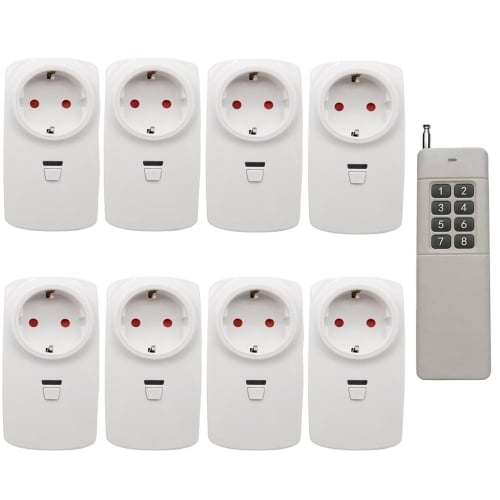
I’m not an electrician, but wouldn’t remote control imply that something still remains on standby? So that it can receive a wake-up signal, if nothing else.
Indeed so but the power draw is very miniscule.
This is virtually standard in Australia
It is standard in NZ
deleted by creator
Depending on who built the house, it’s the standard for a “good” house in Ghana, Nigeria, Zambia and I think Kenya.
For safety I guess?
I don’t get how that makes it safer.
So when the dumb person tries to insert a fork in the plug, they don’t die electrocuted.
There are already slats so the only hole you can get a fork into is the earth, unless you’ve already got something convincingly shaped like an earth pin in the earth hole to open the slats over the live and neutral. If you’re going to that much effort to zap yourself, the switch isn’t going to be much of a hurdle.
I’d suspect that it’s largely because it’s more convenient to have a switch than to unplug things and plug them back in again, especially as our plugs are a nightmare to step on to the point that Americans complaining about stepping on lego seems comical to anyone who’s stepped on lego and a plug.
Some of our sockets now have interlock type slats. Not only do you need to insert the earth pin first, but you also have to insert the live and neutral together. Now, even if you wedge the earth open, you still can’t insert a fork into the live.
Have you seen the list of safety features on UK plugs and sockets? The sockets have shutters in them that prevents anything being inserted into the live or neutral sockets unless the (longer) earth pin of a matching plug is inserted first.
Having said that, I agree: seems to be a belt-and-braces approach. No downsides.
And it allows you to cut power to an appliance without having to remove the plug.
Sockets with flaps are code in the us too and have been for a while.
Isn’t the USA 2 pin for many outlets, though. So there is no earthing. The uk socket requires the earth connection to be made by the longer earth pin on the plug before the flaps will open.
yes but you have to open both shutters at the same time. The ground doesn’t have a shutter.
No, because the ground carries no voltage. It’s literally connected to the ground to route any electricity away from the appliance in case a person touches it.
In my work, I’ve learned that when you see a safety measure that looks overkill and that “no one can’t be that stupid” to do what the measure keeps you from doing is because, in fact, someone was that stupid.
Warning signs and safety regulations are written in blood. I call the certificates of Darwin awards.























